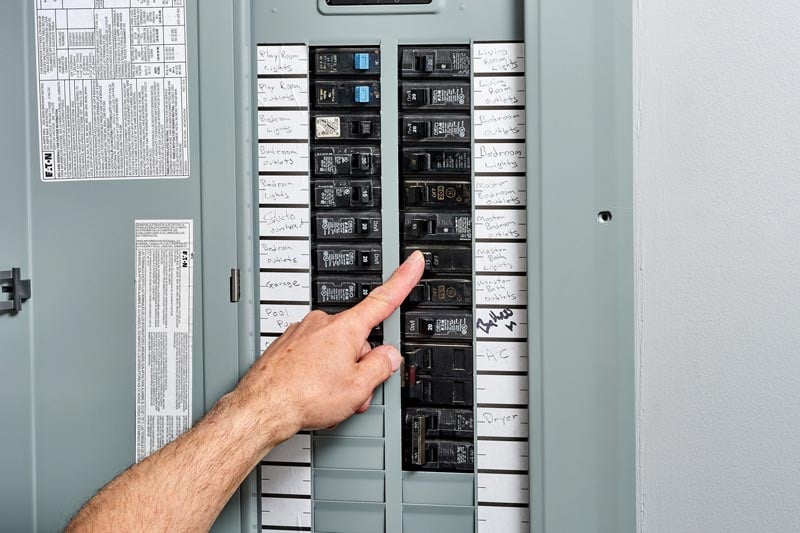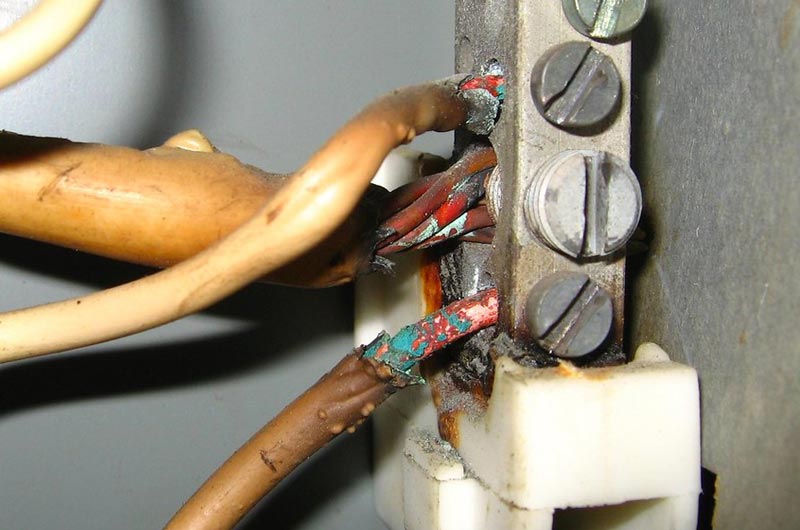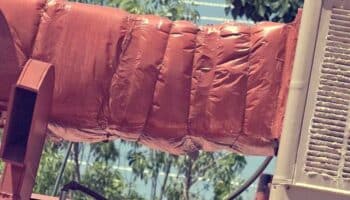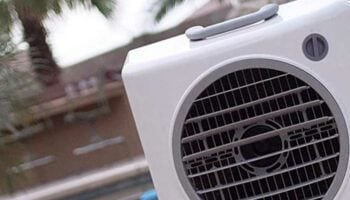We've independently reviewed this article to make sure it's as accurate as we can make it.
To find out more about our article creation and review process, check out our editorial guidelines.
If you’ve got a swamp cooler that won’t start, the good news is it’s more than likely not:
- An issue with water getting to or circulating through your cooler.
- An issue with airflow through your cooler or evaporating water.
The reason you can safely assume those two things aren’t your big problems is because you don’t have any power. If you had power to your swamp cooler, you’d then be able to determine if your water pump or fan motor’s working properly.
As it stand in this case, your big problem is electricity, or a lack there of.
If you’re dealing with a swamp cooler that simply won’t start, there’s no way to even know if you have any other problems until you get reliable power. In other words, you hit start and the swamp cooler comes on.
That doesn’t mean it won’t shut down if there are other issues. But right now, it’s not doing anything. It’s kind of like trying to start a car that has a dead battery.
With a car, you pretty much know right away when there’s a battery issue. Even if the battery’s not dead, you may have loose wire or damaged coils. The point is, if there’s an electrical problem on the ignition side, the car won’t start.
If there’s an electrical issue on the swamp cooler start-up side, the cooler will act like a dead battery. Which means it’ll be really good at doing you no good.
So, let’s take a look at why your swamp cooler won’t start and four simple fixes that may solve the problem before you need to call a technician or electrician.
1. Check Your Circuit Breaker
Regardless of whether your swamp cooler is tied into your main electrical system or it’s a portable unit that’s simply plugged into a normal a electrical outlet, the first place you’re going to start is the circuit breaker feeding your cooler.
Now, back to your breaker. If you your swamp cooler is a large unit, like a whole-home model, you should have a breaker for it all by its lonesome inside your electrical panel or on its own near the unit itself.
All you have to do with it is make sure the breaker isn’t tripped and has power. If the breaker is tripped, reset it and test your swamp cooler.
If your swamp cooler’s breaker is tripping every time you start or run your cooler, it’s recommended you call an electrician, unless you’re comfortable doing some electrical investigative work on your own.
Just remember if your cooler is under warranty, don’t do any work that may inadvertently void it. Instead, call your warranty company or manufacturer for guidance.
Now, if you have a portable swamp cooler that’s tripping the breaker, make sure it’s the only electrical device plugged into the outlet you’re using. If too many items are plugged in, the overall demand may be over loading the circuit and tripping the breaker.
Try switching off other appliances on the same circuit, or, if possible, move the swamp cooler to a new circuit.

2. Check Your Electrical Connection if Plugged In
If you’re using a plug-in swamp cooler and the circuit breaker checks out, it’s time to check the outlet for an issues.
The easiest way to check the outlet is to plug something else into and see if it has power. Another way is to use a multimeter. Either way will give you a quick snapshot of power actually being distributed. However, the multimeter will give you actual data in the form of voltage measurement where as plugging something else in will only tell you if it turns on.
If plugging something else in fails or the multimeter gives you zero indications of power, you have an outlet problem.
To makes sure it’s only the outlet causing your cooler not to start, plug the unit into a different outlet and see if it works. If it does, you know for sure the prior outlet was bad.
Now if your swamp cooler still doesn’t start after confirming power is available from the breaker and an outlet (in the case of a portable cooler), then it’s time to look at the internals of your unit.
3. Does Your Swamp Cooler Have a GFCI Plug?
Some portable swamp coolers come with a GFCI plug for outdoor use. GFCI stands for Ground-Fault Current Interceptor. It’s basically a quick acting breaker that acts to prevent electrical harm in places where a heightened danger is present.
GFCI outlets are common in modern homes in and around sinks or other areas where people and water are typically present.
With appliances that can be used outdoors, and involve water as part of its design, it’s very common to find them equipped with GFCI plugs.
If yours has a plug like this, try to reset your GFCI plug and see if that does the trick. It’s not uncommon for the TEST button to get pressed, activating the breaker. All you should have to do is push RESET.
4. Loose Connections Inside
Okay, back to inspecting the internal wiring of your swamp cooler. If you can get access inside, you need to look for loose connections, damaged wiring and anything out of the ordinary.
Yes, that sounds pretty broad but it won’t be hard to spot loose or damaged wires. Heck, it could be something as simple as a loose ground wire causing problems.
As far as the “out of the ordinary” stuff, this can range from scorch marks to a lot of corrosion in and around electrical connections.
Also, it always helps to have a wiring diagram with you before connecting or replacing any wires. Wiring diagrams are often found in manufacturer’s manual’s, like this one. If not, you can also try an internet search using, “[Brand and Model Number] evaporative cooler wiring diagram.”
Connections can be tightened and wires can be replaced. However, if you’re unsure how to proceed, simply contact a technician for help. The last thing you want to be is unsure, messing with electricity and end up in an accident that’s easily avoidable.

5. Check The Fan Motor
The motor for the swamp cooler’s fan is what pulls the most power when switched on. If it’s starting up but quickly tripping the breaker or dying, the motor could be the cause here.
If the capacitor for the motor is low, this could cause the motor to pull more amps and trip the breaker. However, this isn’t so easy to fix – and varies significantly depending on the model.
In that case then we might be…
6. Out of Ideas
At this point, if you still don’t have power to your swamp cooler and everything you’ve done that’s been recommended hasn’t helped or provided answers, then it’s time to call a technician.
Depending on the age of the unit, it could be something simple, a manufacturer defect, or plain old age that’s caught up to it. Sometimes bad parts can be replaced but also, sometimes swamp coolers need to be replaced.
The main thing is you hit the simple fixes and they didn’t pan out. Now it’s time to get a professional opinion.
Conclusion
A swamp cooler that won’t start isn’t cooling anything. It’s not circulating water. It’s not drawing in air. It’s not evaporating water and making cool air for you to enjoy.
Instead, it’s sitting there doing absolutely nothing for you.
Hopefully, the solution to your swamp cooler’s starting problem is one of the electrical issues outlined above. If it is, then there may be a simple fix in the cards for you.
However, if it’s not an electrical problem with a simple fix, you may find yourself at a point where there is no easy answer and a professional diagnostic needs to be carried out.







